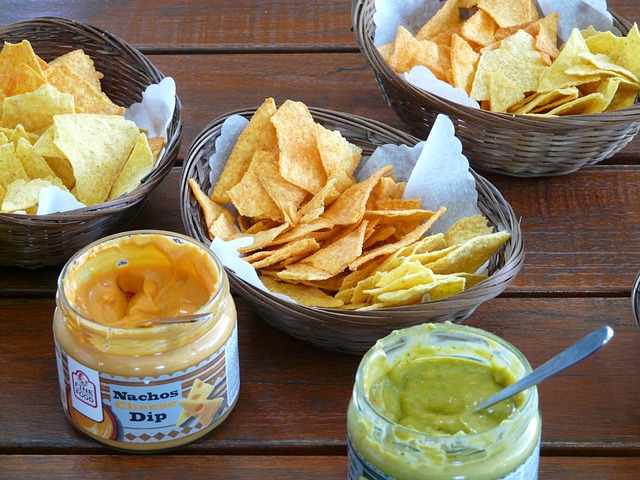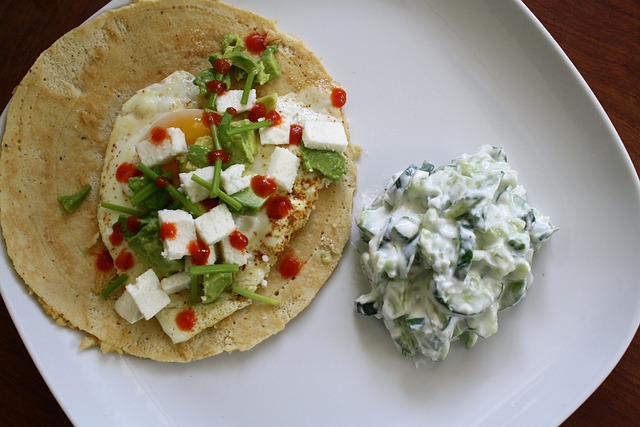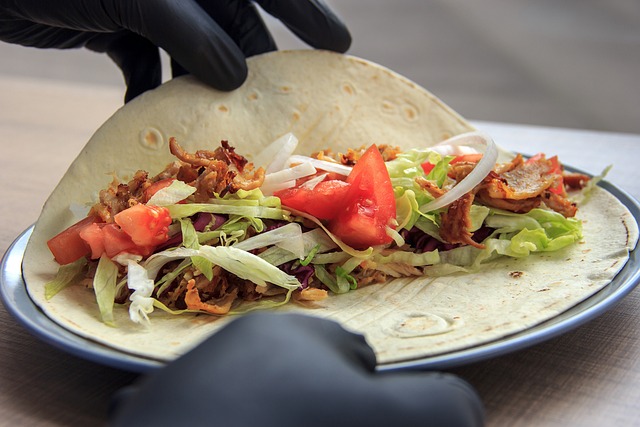Experience authentic Mexican charm through the art of crafting handmade Mission Restaurant Style Tortilla Chips, a traditional method passed down through generations. These chips transform simple ingredients like flour, water, salt, and love into culinary masterpieces, offering a burst of flavor and satisfying crunch. Emphasizing quality over quantity, their manual production ensures superior texture and authentic taste, standing out from mass-produced counterparts. Crafted with high-quality corn or wheat flour, water, salt, and traditional cooking techniques, these chips capture the essence of Mexican cuisine while providing a healthier alternative to processed varieties. Pair them with refreshing margaritas or rich salsas for an enhanced dining experience that transports patrons to the vibrant streets of Mexico.
“Discover the authentic taste and texture of Mexico with handmade tortilla chips, a staple in traditional Mexican cuisine. This article explores the art and craftsmanship behind these crispy treats, focusing on their role in today’s restaurant scene, particularly the popular ‘Mission Restaurant Style’. From ingredient selection to the cooking process, we delve into what makes these chips a healthier alternative while offering pairing suggestions to elevate your dining experience.”
- The Art of Handmade Tortilla Chips: A Traditional Mexican Touch
- Mission Restaurant Style: Redefining Quality and Consistency
- Ingredient Selection: Key to Authentic Flavor
- The Cooking Process: From Dough to Crispy Perfection
- Health Benefits: Why Handmade Chips are a Better Choice
- Pairing Suggestions: Elevating the Dining Experience
The Art of Handmade Tortilla Chips: A Traditional Mexican Touch

The art of crafting handmade tortilla chips is a traditional Mexican touch that adds depth and authenticity to any dish or dining experience. These chips, often reminiscent of what you’d find in a cozy mission restaurant, are not just an accompaniment but a culinary statement. The process involves a delicate balance of flour, water, salt, and love—a simple yet profound combination that has been passed down through generations. Each chip is meticulously shaped, fried to perfection, and seasoned with care, resulting in a crisp texture and a burst of flavor that’s hard to resist.
In Mexican restaurants, mission-style tortilla chips are often the star of the table, served warm and crispy alongside salsa, guacamole, or simply as a vehicle for dipping into various sauces. Their homemade essence elevates the dining experience, transporting patrons to the vibrant streets and cozy corners of Mexico. These chips are more than just a side—they’re a cultural ambassador, inviting each bite to explore and celebrate the rich culinary heritage of Mexico.
Mission Restaurant Style: Redefining Quality and Consistency

At many Mexican restaurants, the tortilla chips are often an afterthought, mass-produced and stored in large bags to be served as a side. However, Mission Restaurant Style Tortilla Chips are transforming this norm. This approach prioritizes quality and consistency, ensuring each chip is crafted with care using traditional methods.
The process involves hand-making each tortilla from scratch, allowing for a lighter, crispier texture that cannot be replicated by machines. The result is a chip that’s not only delicious but also visually appealing, offering a true taste of authentic Mexican cuisine. Mission Restaurant Style Tortilla Chips are revolutionizing the way we think about this staple, raising the bar for quality and setting a new standard in the restaurant industry.
Ingredient Selection: Key to Authentic Flavor

The selection of ingredients plays a pivotal role in crafting authentic Mission Restaurant Style Tortilla Chips. To replicate the classic, crisp, and flavorful chips found in Mexican eateries, one must prioritize using high-quality corn, preferably stone-ground or whole grain, for a robust taste and texture. This foundational ingredient sets the stage for the rest of the recipe, ensuring each chip holds its shape and offers a satisfying crunch.
Furthermore, the choice of oil is paramount. Traditional methods favor lard or vegetable oils, contributing to the chips’ golden color and crispness. These natural fats not only enhance flavor but also ensure the chips remain moist and flavorful, preventing them from becoming overly brittle. The right combination of these essential ingredients forms the backbone of an exceptional tortilla chip experience, capturing the essence of Mission Restaurant Style in every bite.
The Cooking Process: From Dough to Crispy Perfection

The journey from dough to crispy, golden chips begins with a traditional Mexican recipe and a touch of culinary artistry. To create restaurant-style tortilla chips, like those found in beloved Mission-style restaurants, corn or wheat flour is mixed with water and a pinch of salt, forming a dough that embodies the essence of simplicity. This dough is then shaped into thin circles, often by hand, to ensure consistency.
The magic happens when these delicate rounds are cooked in hot oil, where they transform from soft dough to crispy perfection. The secret lies in the perfect balance of heat and time: too much heat can burn, while not enough will leave them doughy. As they fry, the starches gel, locking in the chips’ crispiness, and the aroma of freshly cooked tortillas fills the air. This meticulous process results in chips that are not only delicious but also an iconic representation of authentic Mexican cuisine, particularly in the Mission style.
Health Benefits: Why Handmade Chips are a Better Choice

Handmade tortilla chips, often reminiscent of those found in authentic Mexican restaurants, offer a healthier alternative to their processed counterparts. The traditional method of making Mission Restaurant Style Tortilla Chips involves simple, natural ingredients like corn or wheat flour, water, and salt—no artificial additives or preservatives. This lack of chemicals makes them an appealing choice for health-conscious consumers.
Moreover, the manual chip-making process ensures better control over cooking times and temperatures, resulting in a more nutritious product. Deep-frying, a common method for commercial chips, contributes to high fat content. Handmade chips, often baked or fried at lower temperatures, retain more of their natural nutrients, providing a lighter, crispier, and healthier snack option without compromising on taste.
Pairing Suggestions: Elevating the Dining Experience

Pairing the right food and drink can elevate any dining experience, and Mexican restaurants know this well. When it comes to their signature side—handmade tortilla chips—the options for enhancing the overall meal are endless. For a classic pairing, offer a refreshing margarita or a crisp tequila with a side of these crispy treats. The saltiness of the chips complements the citrusy notes in the drinks, creating a delightful contrast.
For a more robust flavor profile, suggest a rich and creamy salsa or guacamole dip. The creamy textures and vibrant flavors melt together with the chips, offering a satisfying sensory experience. Mission Restaurant Style Tortilla Chips, known for their authentic texture and taste, can be the perfect canvas for these dips, allowing diners to indulge in the traditional Mexican pairing and elevate their dining journey to new heights.
Handmade tortilla chips, a cornerstone of authentic Mexican cuisine, have found new life in modern restaurants, particularly those embracing the mission restaurant style. By prioritizing quality, consistency, and traditional methods, these establishments elevate the dining experience. Through careful ingredient selection and meticulous cooking processes, they produce not just chips, but a crispy testament to the rich cultural heritage of Mexico. Pairing them with thoughtful suggestions further enriches the culinary journey, making each bite a celebration of flavor and tradition. So, next time you’re enjoying Mission Restaurant Style Tortilla Chips, remember that every chip tells a story—a story of skill, passion, and the vibrant soul of Mexican culture.
